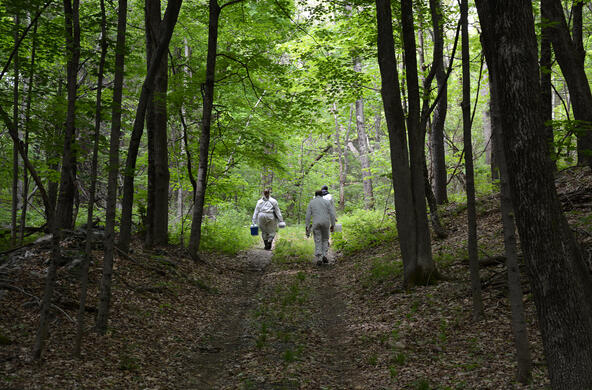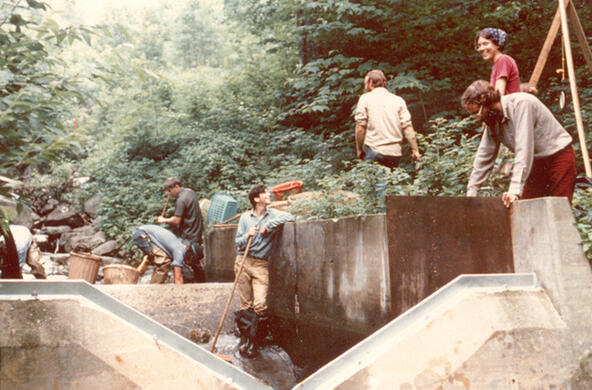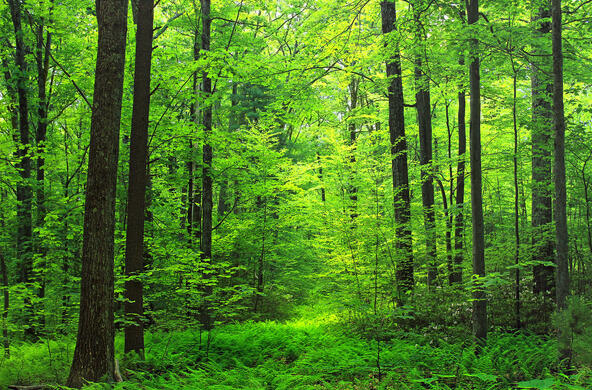On a glorious day several weekends ago, my wife and I hiked up Panther Mountain in the Catskills. On the way, we passed by Giant Ledge, a rock outcrop that overlooks the Woodland Valley and the Slide Mountain Range.
This is one of my favorite views in the Catskills, because almost no human structures or roads are visible — only forest and mountain and sky.
It has the feel of one of the large wilderness areas in the Adirondacks, yet requires only a short drive and hike to get there from Poughkeepsie.
My first thought on seeing this view was how lucky we are to have this wilderness available to us. But luck is really not the right word: the creation of the New York Forest Preserve, which includes the publicly owned land within the Catskill and Adirondack parks, required considerable hard work by visionaries at the turn of 20th century, and it requires much vigilance on the part of the Department of Environmental Conservation to maintain.
Despite the gorgeous view on this day, with the fall foliage still in full color, as a forest ecologist I know there are many threats to this forest. The establishment of the forest preserve eliminated the most serious threat of that era, rapacious logging, and has also held back the tide of land development in recent years. Those threats are local, and providing strong land-use regulations is effective in keeping them at bay. In contrast, many of today's threats are regional or global, and are not solved by setting land aside in preserves.
For instance, on our way to the trailhead, we drove by the upper reaches of the Neversink River, which has been severely impacted by acid rain. Acid rain is caused by pollution from fossil fuel use by vehicles, industries and power plants. It is a pervasive problem throughout the eastern United States and many other developed areas of the world.
In the Neversink valley, trout can no longer survive in the headwater streams because of the acidity, and the sugar maple trees that dominate this forest are growing more slowly and producing fewer seedlings because of soil acidification.
A second threat is pests and diseases introduced from around the world by global trade. On the way up to Giant Ledge, we hiked through a stand of majestic hemlocks — all of which will probably die in the next decade because of an Asian insect pest called the hemlock woolly adelgid. Likewise, along the trail we passed a stand of large ash trees, which will also die soon from the invasion of the emerald ash borer, another Asian pest.
Similar pests and diseases are afflicting or threatening beech, oak and maple. These pests were not introduced in the Catskills; they are a problem throughout the eastern United States and symptomatic of a larger global problem. We are suffering the consequences of burgeoning global trade and lax regulation of plant imports and wood-packing material.
A third threat is climate change. Caused mainly by burning of fossil fuels, climate change is already happening in the Catskills and will surely get much worse in the coming decades. .
As the climate warms, the hardwood trees that cover lower elevations will grow higher on Slide Mountain and other Catskill peaks, eventually erasing the spruce-fir forest from the Catskill range. With it, we will lose the animals that call these forests home.
To be sure, the existence of the forest preserve helps nature deal with these threats. Having large areas of land protected from logging and other disturbances makes it more likely that somewhere in the forest there will be a cooler valley, a less acid-sensitive stream, or an insect-resistant tree that can withstand these stresses.
But the real solution to these threats is national action, including strong climate change legislation, effective acid rain controls and more stringent regulations on the importation of pests and diseases.
These days, effective conservation requires more than drawing boundaries on a map: it involves convincing our representatives in Washington that the forest we hold dear is in danger unless they act forcefully to protect it.








